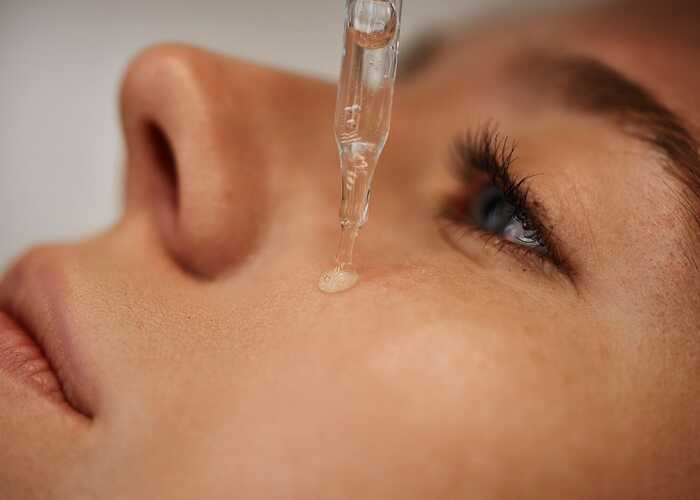Why Choose Alpha Hydroxy Acids
The word "acids" often intimidates people when it comes to skincare, but fear not. Alpha Hydroxy Acids (AHAs) are a group of cosmetic ingredients known as liquid acid exfoliants, commonly used as chemical peel agents. Their purpose is to exfoliate the top layer of skin cells, leaving your skin looking fresher, firmer, and more radiant.
Where do AHAs come from?
AHAs are naturally occurring acids derived from citrus fruits, milk, and sugar. Among the various types, the most commonly used in skincare products are glycolic acid, derived from sugar cane, and lactic acid, typically obtained from sour milk. At Oleo Bodycare, however, we follow a vegan ethos and obtain our lactic acid from corn. We also utilise citric acid from lemons and oranges, malic acid from apples, and tartaric acid from blueberries.

Why are AHAs beneficial for our skin?
AHAs are highly effective chemical exfoliants, providing a gentler alternative to physically abrasive scrubs. They effectively remove dead skin cells from the surface, preventing signs of aging and imparting a beautiful, radiant glow to your complexion.
Over time, by diminishing the appearance of wrinkles and fine lines, your skin appears healthier and more youthful. Moreover, AHAs excel at reducing the effects of sun damage caused by UV rays. If you suffer from sensitivity to physical and grain-based scrubs, incorporating these acids into your routine can significantly improve your skin's health.
Lactic Acid - an exceptional moisturiser
Lactic acid is particularly favoured for sensitive and mature skin. Its larger molecule size limits its penetration into the skin, reducing the risk of irritation. Since our bodies naturally produce lactic acid, individuals with specific skin sensitivities tend to respond better to it, as their skin is more receptive. By breaking down the bonds between skin cells, lactic acid gently exfoliates and removes dull, dead skin, revealing a polished, hydrated, and firmer skin tone. One of its remarkable qualities is its ability to enhance the skin's natural moisture barrier. As a natural humectant, it draws water into the skin, maintaining a healthy, supple moisture level. Furthermore, the exfoliating properties of lactic acid create an ideal foundation for other hydrating ingredients to be absorbed and retained in the skin.
Glycolic Acid - immediate skin softening
As a natural fruit acid, glycolic acid boasts the smallest molecular size among AHAs, allowing for maximum penetration. It is particularly effective at targeting wrinkles, fine lines, and texture issues. By working deep within the skin, it enhances collagen and elastin regeneration, resulting in an overall more youthful appearance. However, its deep penetration potential also poses a risk of irritation if used in high concentrations. Therefore, at Oleo, we recommend initially using our AHA Skin Smoothing Tonic every other day.

Citric Acid - stimulating collagen synthesis
Citric acid, although larger in size compared to glycolic acid, still possesses significant benefits. It acts as a natural astringent, leaving the skin feeling refreshed and clean. What sets citric acid apart from other acids is its antioxidant properties. External aggressors, such as sun damage, can wreak havoc on skin cells, and antioxidants like citric acid help combat oxidative stress, resulting in brighter-looking skin.
Malic Acid - boosting skin elasticity
Malic acid is a valuable alpha hydroxy acid, especially for those with easily irritated skin. When dead, dry skin cells clump together, they can clog pores and give your complexion a lacklustre appearance with uneven texture. By breaking down the "glue" that holds these cells together, malic acid exfoliates and brightens the skin. It is also effective in treating keratosis pilaris, those bothersome bumps known as "chicken skin" that often appear on the backs of your arms. Moreover, malic acid acts as a humectant, attracting and retaining moisture in the skin. Additionally, it helps maintain the skin's stable pH, preserving the skin's acid mantle and overall health. The acid mantle, a superfine film of acid on the skin's surface, serves as a barrier against bacteria, viruses, and other harmful elements.
Tartaric Acid - maintaining the skin's pH range
While this ingredient may not immediately come to mind, chances are you've encountered it in your everyday life. Tartaric acid is found in fruits such as apricots, apples, and grapes, imparting their tart taste and aroma to wines.
In skin care, tartaric acid plays a crucial role in maintaining the required pH range for other AHAs to work effectively. What makes tartaric acid special is its ability not only to synergise well with other AHAs but also to enhance their efficacy, providing you with more value from your exfoliating routine. While certain AHAs should be used individually to avoid redness, flaking, and irritation, tartaric acid acts as a peacekeeper, helping your skin avoid these adverse effects.
Important considerations
All of these acids can cause photosensitivity because the removal of old skin cells makes the newer skin more sensitive to sunlight. Fresh skin is more prone to damage, underscoring the importance of using SPF protection.
It's also crucial to incorporate the acids gradually at first. While some acids are gentler than others, it's worth noting that any acid can be irritating if used too frequently. Starting with spaced-out use allows your skin to adjust to the new products. Patience is key.
So, there you have it—the lowdown on AHAs. When used cautiously and in expertly blended proportions of the various fruit acids available, you'll discover an amazing product that leaves your complexion softer, smoother, and
Posted by Olivia Chapman on May 17th 2023



